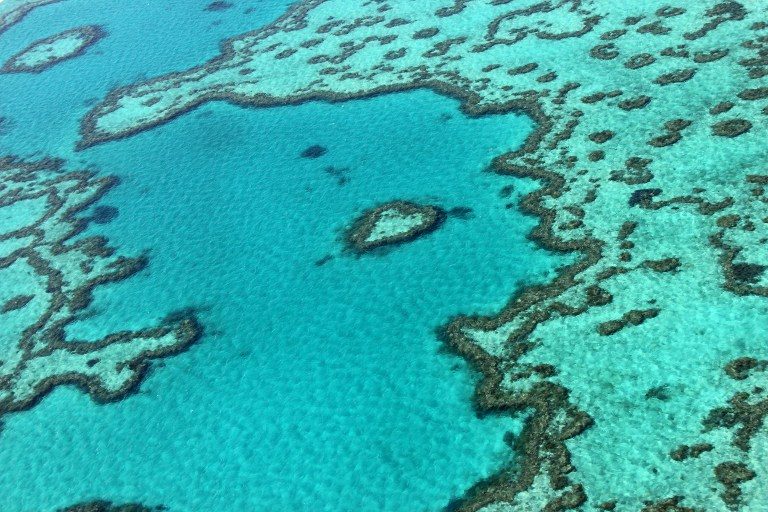SUMMARY
This is AI generated summarization, which may have errors. For context, always refer to the full article.

SYDNEY, Australia – Scientists Tuesday, March 1, warned coral bleaching was occurring on the Great Barrier Reef as sea temperatures warm, and it could rapidly accelerate unless cooler conditions blow in over the next few weeks.
Authorities cautioned last year that the world faced a mass global coral bleaching event driven by the warming effects of the El Niño weather phenomenon, and the ARC Centre of Excellence for Coral Reef Studies said it was a growing concern.
“Current reports of coral bleaching on the Great Barrier Reef do not equate to a mass bleaching event,” said the centre’s director Terry Hughes, based at James Cook University in Townsville in Queensland state.
“But we are concerned about a growing incidence of minor to moderate bleaching at multiple locations along the reef as the peak of summer approaches.”
Bleaching is a phenomenon that turns corals white or fades their colors, threatening a valuable source of biodiversity, tourism and fishing.
It occurs when reef symbiosis – the mutually beneficial relationship between two organisms that inhabit corals – is disrupted by a rise in ocean warming, although there can also be other causes.
Janice Lough, senior research scientist at the Australian Institute of Marine Science, said the next few weeks were crucial.
“The latest Bureau of Meteorology forecasts suggest that we could see significant above average temperatures through the month of March, which may mean more bleaching ahead for corals on the Great Barrier Reef unless we get some windy and cloudy weather soon,” she said.
The Barrier Reef – the world’s biggest coral reef ecosystem – is already struggling from the threat of climate change, as well as farming run-off, development and the coral-eating crown-of-thorns starfish.
It narrowly avoided being put on the UN World Heritage in danger list last year with Canberra working on a plan to improve the reef’s health over successive decades.
A study by the University of Queensland and the US National Oceanic Atmospheric Administration in October said only two previous mass coral bleaching events had been recorded in history and Hughes said he hoped the reef would avoid a similar fate.
“We have been closely monitoring conditions on Australia’s coral reefs for the past 6 months,” he said.
“The best outcome is that the bleaching doesn’t get any worse, but if it becomes more widespread, we are ready to mobilize a network of scientists to document the extent of the bleaching, which will help us understand how the reef is responding to successive major bleaching events.”
WWF-Australia said a wide variety of corals were being impacted.
“Global warming – fueled by burning fossil fuels – is increasing the water temperature and bleaching coral reefs,” said WWF Great Barrier Reef campaigner Louise Matthiesson.
“Right now, the Great Barrier Reef is on a knife-edge.”
One of the worst mass bleaching episodes on record, which affected reefs in 60 tropical countries, took place in 1998, when the El Nino weather pattern was exceptionally strong.
The phenomenon occurs when trade winds that circulate over waters in the tropical Pacific start to weaken and sea surface temperatures rise. – Rappler.com
Add a comment
How does this make you feel?
There are no comments yet. Add your comment to start the conversation.